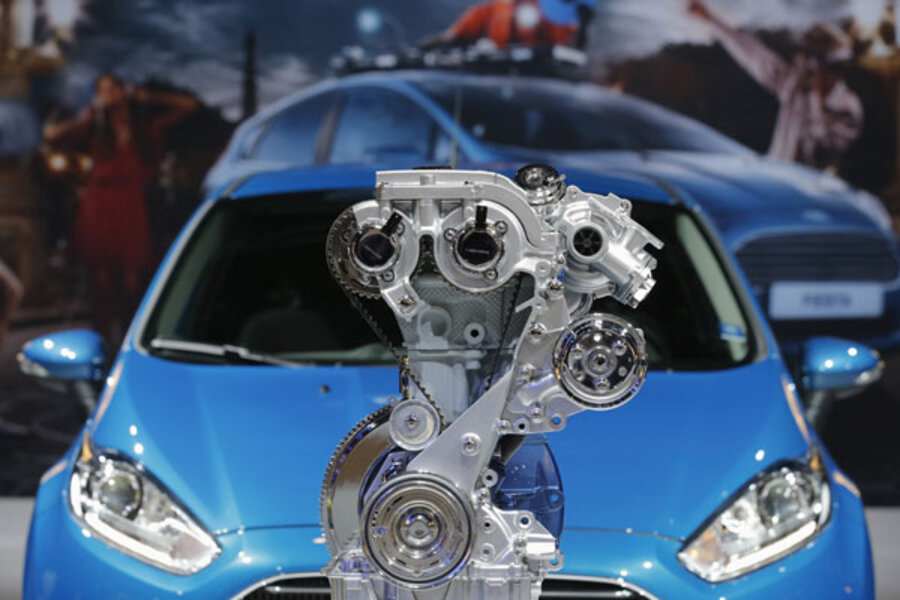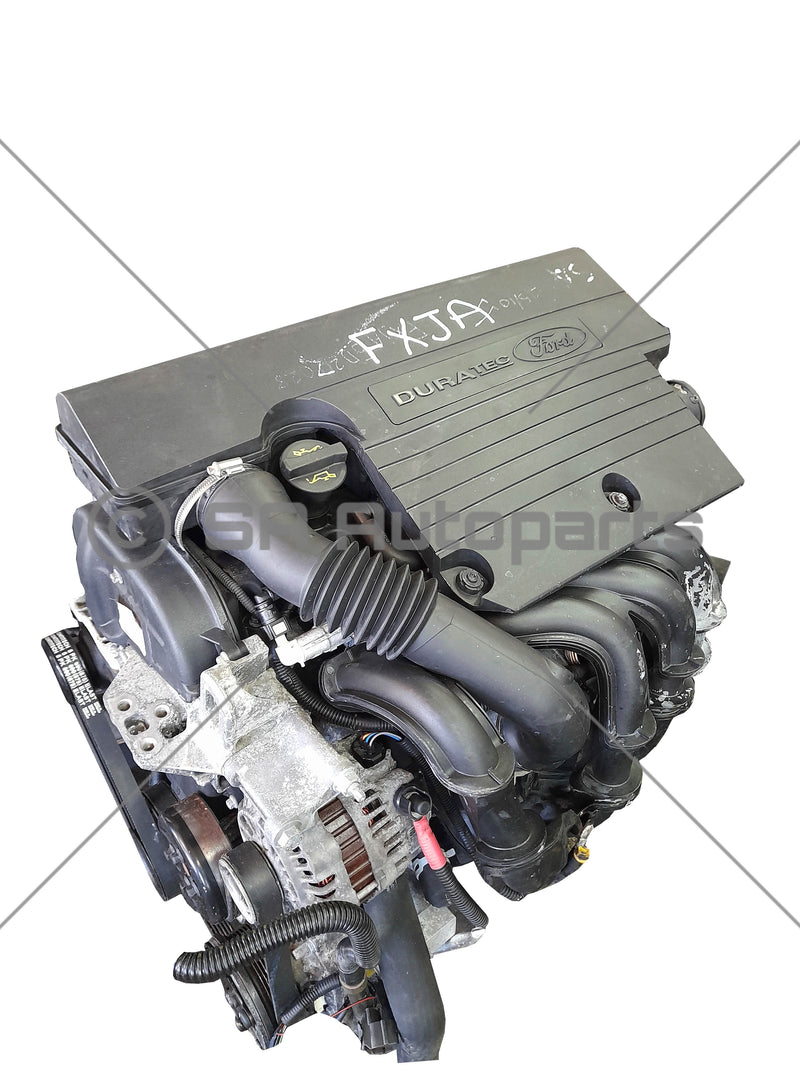Exploring the Benefits of a High-Performance Ford Fiesta Engine
Exploring the Benefits of a High-Performance Ford Fiesta Engine
Blog Article
Discovering the Advancement of Engines: From Timeless Designs to Modern Marvels
From the initial heavy steam engines that powered the Industrial Change to the introduction of internal combustion engines that changed wheelchair, each phase has actually contributed to greater performance and ability. As we analyze these landmarks, one need to think about just how the future of engine design may unfold, challenging our assumptions of power and effectiveness.
The Birth of Engine Modern Technology
The introduction of engine innovation marked an essential moment in human technology, transforming energy conversion and transport. The earliest engines emerged from the requirement to harness mechanical power for sensible use, causing the growth of devices that converted different power kinds into activity. The concept of the engine can be traced back to old people, where simple devices, such as the waterwheel and windmill, utilized all-natural pressures to execute job. Nevertheless, it was during the late 17th and very early 18th centuries that considerable advancements began to emerge.
The development of the internal combustion engine and the innovation of the heavy steam engine catalyzed a profound change in commercial abilities. These engines not only enhanced efficiency yet also expanded the scope of human mobility, enabling unprecedented transportation possibilities. The early models laid the foundation for the mechanical world, promoting the increase of sectors and reshaping societal frameworks.
As engine designs advanced, they advanced and integrated innovative products engineering concepts, paving the means for contemporary developments - ford fiesta engine. The birth of engine technology stired up a ruthless search of effectiveness and power, setting the phase for the dynamic advancement of transportation and industrial equipment that would follow
Steam Engines and Their Influence

The heavy steam engine's effect was especially noticeable in the transport industry (ford fiesta engine). Steam-powered engines assisted in the quick motion of products and individuals across substantial ranges, properly reducing the geographical barriers that had formerly impeded profession and communication. Steamships revolutionized marine traveling, allowing for quicker and extra trustworthy crossings of rivers and seas.
In market, vapor engines powered factories, making it possible for mass production and the surge of urban facilities as centers of economic activity. This change not just altered labor dynamics yet also added to the development of a consumer-driven culture. Furthermore, heavy steam technology cultivated technologies in engineering and manufacturing processes, laying the groundwork for future advancements in engine design. The heritage of steam engines is profound, mirroring a turning point in human ingenuity and the ruthless quest of progression.
The Increase of Interior Combustion
Frequently overshadowing steam power, the surge of inner burning engines marked a transformative shift in transportation and sector throughout the late 19th and early 20th centuries. The advancement of these engines, characterized by their capacity to burn gas within the engine itself, enabled better effectiveness and power contrasted to traditional vapor engines. Pioneering developers such as Nikolaus Otto and Rudolf Diesel played important roles in developing engine designs, bring about extensive adoption in cars, watercrafts, and commercial machinery.
The inner burning engine's compact dimension and fairly lightweight nature promoted the introduction of personal lorries, changing specific wheelchair and reshaping city landscapes. By enabling faster traveling and the effective transportation of goods, these engines militarized economic development and fostered globalization. The adaptability of fuel alternatives, including fuel and diesel, additionally enhanced their charm, allowing for varied applications throughout different fields.
In spite of the ecological issues that would certainly later develop, the first appeal of inner burning modern technology stocked its transformative possibility. As society accepted this development, the structure was laid for contemporary transport systems, establishing interior burning engines as a cornerstone of commercial advancement and life throughout the 20th century.
Advancements in Engine Effectiveness
As inner combustion engines ended up being integral to transportation and market, the emphasis moved towards improving their effectiveness to fulfill growing demands for efficiency and sustainability. Innovations in engine design, product scientific research, and innovation have actually dramatically contributed to this evolution.
One significant development is the advancement of turbocharging, which enables enhanced air consumption, causing more complete fuel burning and improved power output without enlarging engine size. Furthermore, variable shutoff timing systems have actually been carried out to maximize engine efficiency throughout various RPM ranges, webpage consequently improving gas effectiveness.
The use of innovative gas shot technologies, such as direct shot, has actually additionally played a crucial function. This technique enables more precise control over the fuel-air mixture, promoting far better burning and minimizing discharges. Moreover, lightweight materials, consisting of light weight aluminum and composite elements, have been adopted to lower general engine weight, causing improved efficiency.
These advancements reflect a wider trend blog here within the automotive industry, where the harmony in between design technology and ecological factors to consider drives the recurring mission for greater effectiveness in interior combustion engines. Because of this, modern-day engines are now more powerful, cleaner, and effective than ever, leading the method for an extra sustainable future in transport.
The Shift to Electric Power
With expanding worries over environmental effect and fossil fuel reliance, the auto market is experiencing a significant change in the direction of electric power. This transition is driven by a mix of technological advancements, governing pressures, and altering customer preferences. Electric automobiles (EVs) offer a compelling choice to standard internal combustion engines, flaunting decreased greenhouse gas exhausts and lower operating prices.
The rise of battery modern technology has been a video game changer, with lithium-ion batteries ending up being more efficient and cost-effective. Improved power density and faster billing capabilities have actually made EVs more functional for day-to-day use. Governments worldwide are carrying out rewards and establishing enthusiastic targets for phasing out fossil gas automobiles, thereby accelerating the adoption of electrical power.
Significant car manufacturers are investing heavily in r & d, causing the intro of a varied variety of electrical versions. This consists of not just automobile yet additionally business vehicles and public transportation services. As billing framework expands and battery innovation continues to boost, the change to electric power is positioned to reshape the automobile landscape, advertising sustainability and technology in the years to find. The future of transportation is electric, and the energy is obvious.
Conclusion
The evolution of engine modern technology stands for a substantial trajectory of advancement that has greatly influenced transportation and industry. From the fundamental steam engines to the transformative inner burning engines, each advancement has actually added to enhanced flexibility and financial growth. The existing transition towards electrical power underscores an important commitment to sustainability, driven by innovations in battery innovation. This ongoing development not only shows changing social needs yet likewise highlights the potential for a cleaner and extra effective future in engine design.

Report this page